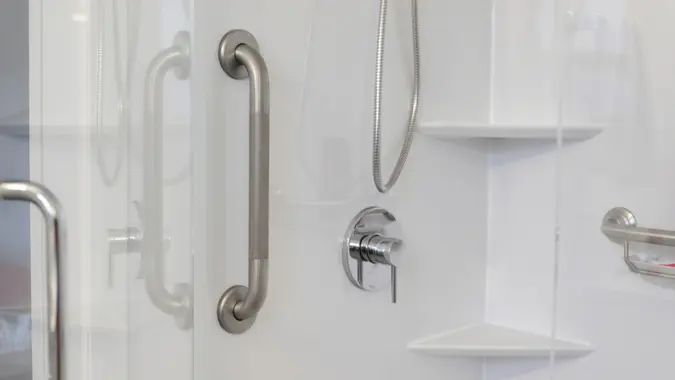Suze Orman Shares 3 Cost-Cutting Tips For Your Retirement Remodel

Commitment to Our Readers
GOBankingRates' editorial team is committed to bringing you unbiased reviews and information. We use data-driven methodologies to evaluate financial products and services - our reviews and ratings are not influenced by advertisers. You can read more about our editorial guidelines and our products and services review methodology.

20 Years
Helping You Live Richer

Reviewed
by Experts

Trusted by
Millions of Readers
It’s a big decision to remodel your home during retirement, considering the cost. You might want to downsize, but you’re thinking it might be unaffordable given elevated home prices coupled with high mortgage interest rates. Instead, choosing to stay put and remodel your home to make it more comfortable and accessible as you get older could be a smarter move.
However, there are three things you’ll want to avoid if you decide to go through with it.
3 Money Saving Tips When Remodeling Your Home In Retirement
Here are three ways to save a bundle when remodeling your home after you’ve called it quits at work, according to Suze Orman:
- Use some of your emergency savings: If you’ve successfully saved at least one year’s worth of living costs, you’ve done well. If you choose to remodel your home, you can take up to three months of those savings for necessary “age-in-place” home remodeling. However, it’s important not to let your emergency savings dip below nine months of living expenses and, after you’ve taken out money, be sure to replenish your account whenever possible.
- Try to pay in cash and avoid borrowing money: Borrowing money, especially when you’re retired and might have a lower income, can be very costly due to interest. If you take a home equity line of credit (HELOC) loan to pay for the renovations, most of these loans have an adjustable interest rate. This means you could face unpredictable, fluctuating interest rates depending on what’s going on with the economy. It’s best to avoid this, especially if you’ve stopped working.
- Focus on your needs: Your needs and your wants can also be applied to the type of home renovations you choose in retirement. For example, remodeling your dated kitchen is certainly a want. Meanwhile, remodeling your bathroom to allow for a more accessible shower entry and installing grab bars is a need. Your money should be spent first on renovations that allow you to safely age in place — and then you can spend on aesthetics (if you have room in your budget).
 Written by
Written by  Edited by
Edited by 

























